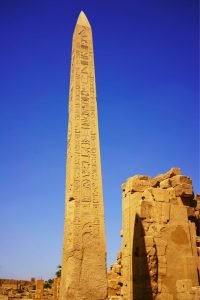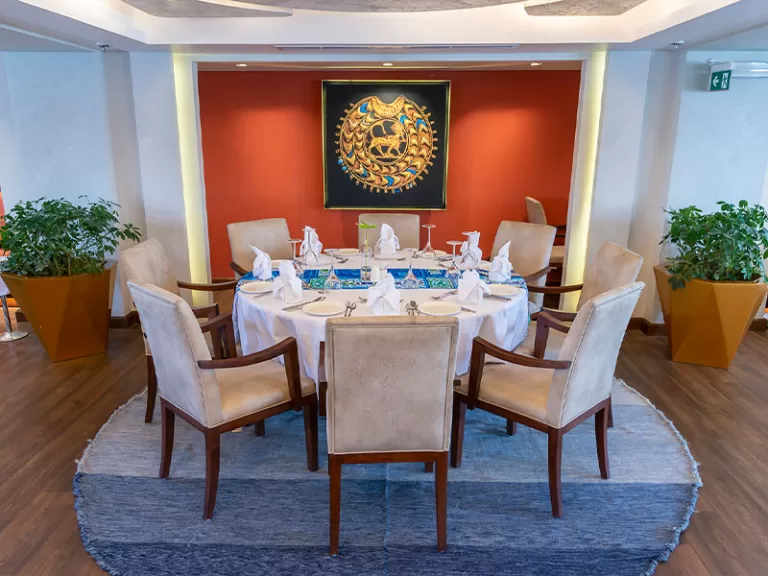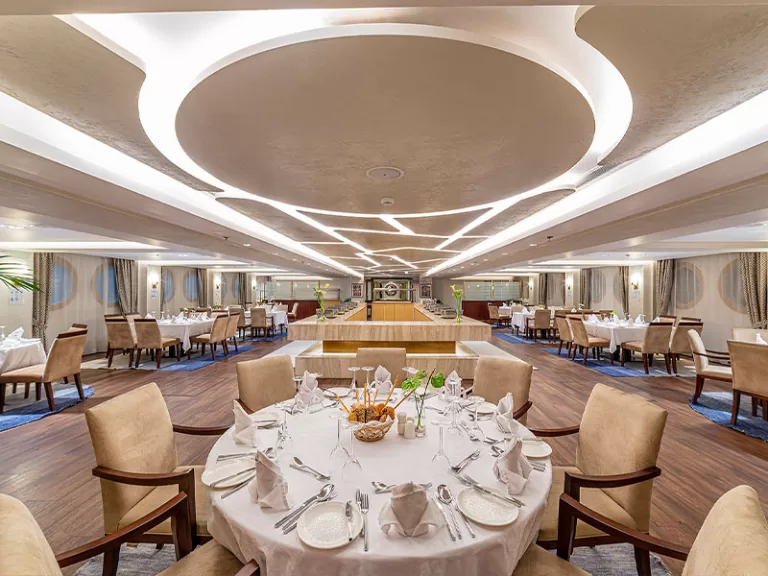

Home » Weekly Blog » Exploring the Unique Statues of Karnak Temple: A Glimpse into Ancient Egypt’s Rich History
Welcome to the majestic Karnak Temple, an architectural marvel nestled in the heart of Luxor, Egypt. As we embark on this virtual journey, we’ll uncover the secrets and stories behind some of the most unique and captivating statues that grace the hallowed grounds of Karnak. Steeped in history, this temple complex stands as a testament to the grandeur of ancient Egypt and the cultural richness that has fascinated archaeologists, historians, and travelers for centuries.
In this exploration, we’ll delve into the artistry and symbolism woven into the fabric of Karnak, focusing on remarkable statues that transport us back to a time when pharaohs ruled the Nile and gods walked among mortals. While the colossal Colossi of Memnon stand guard at the temple’s entrance, our focus will be on the lesser-explored yet equally mesmerizing statues that contribute to the tapestry of Karnak’s historical significance. Join us as we unravel the mysteries behind the Avenue of Sphinxes, the towering obelisks, and the divine sculptures that whisper tales of a bygone era.

As you step into the sacred realm of Karnak Temple, your journey begins along the awe-inspiring Avenue of Sphinxes. Flanking the path with regal poise, these sphinxes, with their distinctive ram-headed features, create a majestic procession leading to the heart of the temple. Each sphinx symbolizes the deity Amun in his powerful ram form, a divine presence guiding visitors toward the sacred spaces within.
The significance of the ram-headed sphinxes extends beyond their aesthetic appeal. In ancient Egyptian mythology, the ram was associated with fertility, strength, and protective qualities, embodying attributes befitting the grandeur of Karnak. As you tread between these weathered yet resilient statues, envision the processions and rituals that once animated this ceremonial route, echoing with the footsteps of priests and pilgrims.
The Avenue of Sphinxes serves as a mesmerizing prelude to the treasures awaiting discovery within Karnak. It not only showcases the artistic prowess of ancient Egyptian craftsmen but also sets the stage for the spiritual and cultural experiences that unfold within the temple complex. With each step, you are drawn deeper into the historical narrative, setting the tone for the unique statues that await further exploration.

As we venture beyond the grand procession of sphinxes, our journey within Karnak Temple unveils two towering symbols of ancient Egyptian power and devotion: the obelisks of Hatshepsut and Thutmose I.
Standing proudly within the temple complex is the obelisk dedicated to Queen Hatshepsut, one of ancient Egypt’s most iconic female pharaohs. Carved from a single block of red granite, this slender monument reaches toward the heavens, adorned with intricate inscriptions that narrate the queen’s achievements and divine connections. The obelisk serves as both a testament to Hatshepsut’s remarkable reign and a beacon of religious significance within Karnak.
Adjacent to Hatshepsut’s obelisk, the monumental structure dedicated to Thutmose I commands attention with its sheer size and historical resonance. Carved with hieroglyphs proclaiming the pharaoh’s piety and victories, this obelisk stands as a silent witness to the religious fervor and architectural prowess of ancient Egypt.
These obelisks, with their towering presence and detailed engravings, transcend mere monuments; they are windows into a past where the intersection of spirituality and leadership shaped the destiny of a civilization. The obelisks of Karnak, like silent sentinels, invite visitors to contemplate the enduring legacy of these pharaohs and the intricate beliefs woven into the very fabric of the temple. As we stand before these monumental structures, we can’t help but feel the echoes of a bygone era, where rulers sought to immortalize their triumphs and devotion in the enduring stone of Karnak.
Moving deeper into the labyrinthine wonders of Karnak Temple, our next encounter unfolds with the magnificence of the statue dedicated to Pharaoh Senusret I. This remarkable sculpture stands as a testament to the artistry and reverence bestowed upon Egypt’s rulers.
Carved with meticulous precision, the statue of Senusret I captivates with its lifelike representation. The pharaoh, depicted in regal attire, exudes an aura of authority and wisdom. The sculptors of ancient Egypt demonstrated their mastery in capturing the essence of the ruler, immortalizing Senusret I in stone for eternity.
Beyond its aesthetic allure, this statue holds historical significance. Senusret I, a pharaoh of the Middle Kingdom, left an indelible mark on Egyptian history through military conquests and architectural achievements. The statue’s presence within Karnak speaks to the enduring legacy of this influential ruler, offering a glimpse into the cultural and political landscape of ancient Egypt during his reign.
As we stand in the shadow of Senusret I’s statue, we are transported back in time, envisioning a society that revered its leaders as divine figures. The attention to detail, from the pharaoh’s facial features to the intricacies of his attire, underscores the reverence bestowed upon rulers by the skilled artisans of Karnak. This statue serves not only as a visual spectacle but as a poignant reminder of the intersection between art, power, and spirituality in the grand tapestry of ancient Egyptian civilization.

Venturing further into the heart of Karnak Temple, our exploration brings us to a unique feature that transcends traditional statues but holds profound ritual significance—the Sacred Lake.
This expansive body of water served a pivotal role in the religious ceremonies of ancient Egypt. As a symbol of purity and regeneration, the Sacred Lake played a central part in the cleansing rituals undertaken by priests and devotees. Its tranquil waters mirrored the celestial beliefs of the Egyptians, embodying the cosmic waters from which life emerged.
While not conventional statues, the sculptures adorning the perimeter of the Sacred Lake are integral to the temple’s spiritual landscape. These statues, depicting various deities and symbolic figures, added a divine presence to the sacred waters. As devotees approached the lake for rituals, they would have been accompanied by the watchful gazes of these stone guardians.
As we stand beside the Sacred Lake, we can imagine the echoes of ancient rituals, the splendor of processions, and the profound connection between the earthly and the divine. Though not conventional statues, the figures surrounding the lake contribute to the immersive experience within Karnak, illustrating how every element of the temple was imbued with spiritual significance. The Sacred Lake stands as a testament to the intricate fusion of religion and architecture that defined the essence of Karnak Temple.

Our journey through Karnak Temple takes a fascinating turn as we encounter the imposing and awe-inspiring statues of Sekhmet, the lion-headed goddess of war and healing.
Sekhmet, a formidable deity in the Egyptian pantheon, is often depicted with the head of a lioness, symbolizing strength and ferocity. She was believed to possess both destructive and healing powers, making her a complex and multifaceted figure in ancient Egyptian mythology.
Within Karnak Temple, statues of Sekhmet stand as guardians, their imposing presence evoking a sense of both reverence and trepidation. The craftsmanship displayed in these statues is nothing short of extraordinary, capturing the intensity of Sekhmet’s divine nature. The lioness-headed figures, with their stoic expressions, stand as protectors of the sacred space, embodying the duality of a deity capable of both wrath and healing.
As we stand in the shadows of these formidable statues, it’s impossible not to feel the potency of Sekhmet’s energy. The intricate detailing of the lioness features and the meticulous preservation of these sculptures transport us to a time when the ancient Egyptians sought both protection and healing from this powerful goddess. The statues of Sekhmet in Karnak serve as tangible links to a belief system where the divine and mortal realms intersected, offering a glimpse into the spiritual complexities of ancient Egyptian worship.
Our expedition through Karnak Temple continues to unfold, leading us to a colossal testament to military might and pharaonic prowess—the statue of Thutmosis III on the Sixth Pylon.
Thutmosis III, often referred to as the “Napoleon of Egypt,” left an indelible mark on history through his military conquests and strategic brilliance. The statue dedicated to this mighty pharaoh stands as a monumental tribute to his reign.
Situated on the Sixth Pylon, the statue of Thutmosis III commands attention with its sheer size and intricacy. Carved from durable stone, the statue captures the essence of the pharaoh’s martial prowess, depicting him in regal attire and with symbols of power. The attention to detail in the facial features and royal regalia showcases the artistic mastery of the ancient Egyptian sculptors.
The location of the statue on the Sixth Pylon adds another layer of significance. Pylons served as monumental gateways to temples, and the placement of such a formidable representation of Thutmosis III at this prominent position underscores the importance of military triumph in the narrative of Karnak Temple.
As we stand before the statue of Thutmosis III, we are transported to an era of military conquests and strategic brilliance. The colossal presence of this statue speaks to the might of ancient Egyptian rulers and their ability to immortalize their achievements in stone. It is a poignant reminder of the intersection between military strength, political leadership, and religious significance within the grandeur of Karnak Temple.

Our exploration of Karnak Temple reaches a crescendo as we encounter the imposing and regal presence of the statue dedicated to one of ancient Egypt’s most celebrated pharaohs—Ramesses II.
Ramesses II, often referred to as Ramesses the Great, was a prolific builder and military leader during the New Kingdom. His reign marked a high point in ancient Egyptian civilization, and his legacy endures through numerous monumental structures, including the statue we now encounter in the Great Hypostyle Hall.
Situated within the vast expanse of the Great Hypostyle Hall, the statue of Ramesses II stands as a towering testament to the grandeur of both the pharaoh and the temple complex itself. The hall, with its towering columns and intricate carvings, serves as a majestic backdrop to the colossal representation of Ramesses II.
The statue, crafted with meticulous detail, captures the essence of Ramesses II’s rule. Clad in royal regalia, the pharaoh’s posture exudes authority and strength. The symbolic depictions and hieroglyphic inscriptions surrounding the statue further elevate its significance, offering a glimpse into the divine associations and historical achievements of Ramesses II.
As we stand in the presence of this monumental statue, we are transported to a time of imperial splendor and cultural flourishing. The Great Hypostyle Hall, adorned with this awe-inspiring representation of Ramesses II, serves as a testament to the harmonious convergence of art, religion, and political might in the heart of Karnak Temple. It encapsulates the enduring legacy of a pharaoh whose influence reached far beyond his lifetime, echoing through the corridors of ancient Egyptian history.
Our odyssey through Karnak Temple has unveiled a panorama of extraordinary statues, each a silent sentinel standing witness to the ebb and flow of ancient Egyptian history. From the regal procession along the Avenue of Sphinxes to the divine guardianship embodied by statues of Sekhmet, and the military might symbolized by Thutmosis III’s colossal presence, the temple’s sacred grounds resonate with the echoes of a civilization that revered its rulers and deities.
The Sacred Lake, with its surrounding statues, invites contemplation on the intricate interplay between the earthly and the divine, while the statues of Senusret I and Ramesses II serve as tangible links to the political and cultural tapestry of their respective eras.
As we conclude our exploration, Karnak Temple stands not merely as an architectural marvel but as a living testament to the spiritual, artistic, and political aspirations of ancient Egypt. The synergy of these statues within the temple’s sacred precincts paints a vivid picture of a society where the monumental and the divine converged in an intricate dance.
We invite you to embark on your own pilgrimage to Karnak, to stand before these statues and witness the tangible remnants of a civilization that shaped the course of human history. In the shadows of these stone guardians, the past comes alive, and the stones themselves seem to whisper tales of a bygone era, inviting you to delve deeper into the mysteries of Karnak Temple and the captivating statues that stand as sentinels across the ages.
Sign up to hear about our upcoming adventures, monthly newsletter, exclusive offers, and more!
Required*
Not Ready to book?
Get regular updates on upcoming tour and special promotions.







Sign up for our Mailing List to get updates on our current offerings.